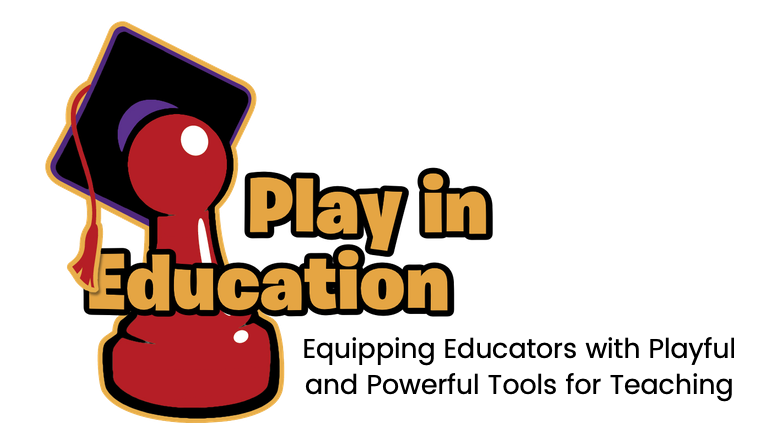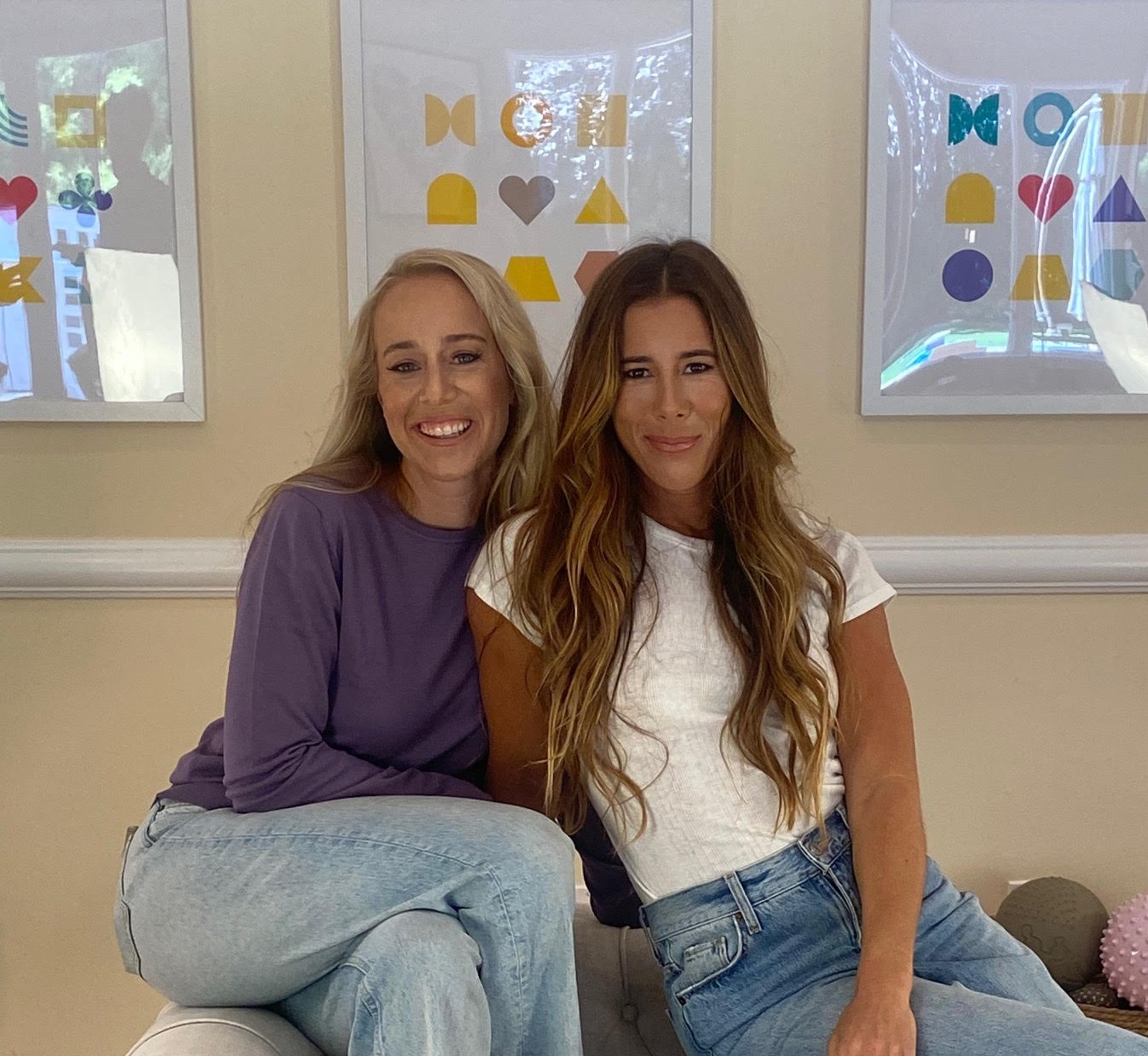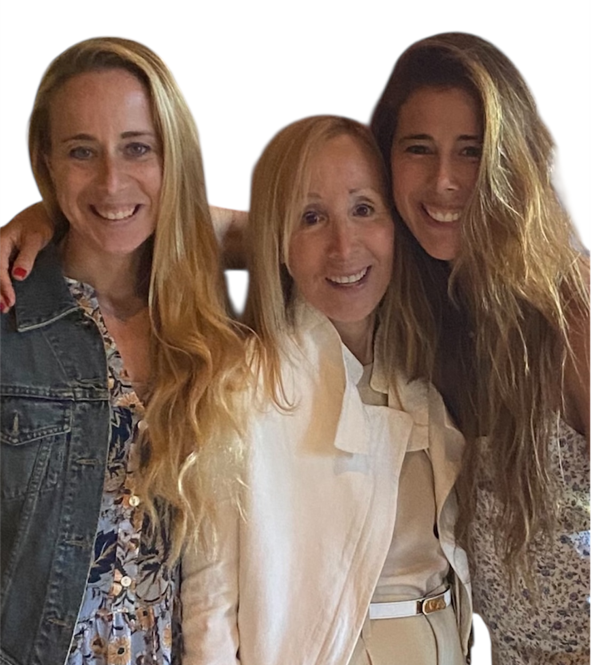View this email in your browser

Empowering Every Child Through Play
Hi Play in Education Community,
We are thrilled to be guest editing this special edition of the Play in Education newsletter, focused on empowerment, education, and support for the special needs and neurodivergent community.
A little about us: Jennifer Rothman, LCSW, is a play therapist and DIR/Floortime® practitioner who has spent over 16 years supporting children, families, and educators. Rachel Rothman is a product media expert, engineer, and active supporter of the neurodivergent community as a mom of three. We are sisters with the same passion to champion for inclusive play by honoring and celebrating all our individual ways of being in the world.
Play isn’t just fun for children — it is a necessity. It is their work and the primary language in which they communicate. It offers infinite opportunities to build foundational capacities needed to integrate all areas of development. Children use play to process their emotional experiences, learn about themselves and others. It allows them to explore, take risks and recharge. Through play, children develop a sense of autonomy and foster relationships.
We understand firsthand that every child’s path is unique — and that within nurturing, attuned relationships and environments every child can thrive. By spotlighting stories, products, and resources, we will focus on the curiosity, creativity, and potential within every learner.
Our hope is to offer inspiration, practical tools, and a celebration of resilience — while recognizing the families, educators, and innovators leading the way. Thank you for letting us be part of your journey.
Playfully yours,
Rachel and Jen

Tools That Spark Joy, Learning, and Growth
These thoughtfully chosen tools are more than just toys—they’re supports for co-regulation, connection, and empowerment. With caregiver guidance, they can help kids engage in sensory play, build emotional awareness, and develop self-regulation skills. Regulation doesn’t always mean calm—it can mean focused, expressive, or simply connected. Whatever your child’s needs are, these picks are about building confidence, communication, and capacity through play.
Crazy Aaron’s Color-Changing Thinking Putty
This heat-sensitive, color-changing
putty engages both touch and sight to support regulation and fine motor development. As kids squeeze and
stretch, the putty warms and transforms—providing a visual cue that can mirror a shift from tension to
calm. There are many different versions of the putty that can serve as a tool for kids that may benefit
from tactile input, support attention, work through moments of dysregulation or build finger strength.
Toniebox
A screen-free, soft, and interactive audio storytelling system that helps
kids build independence, imagination, and emotional self-regulation. Choosing a Tonie character and
placing it on the box to start a story or play music gives kids a powerful sense of agency—especially
during transitions, bedtime, or moments when they need to self-soothe. Caregivers can also record their
own messages or stories onto a Creative-Tonie, allowing children to hear familiar voices anytime. It’s a
beautiful way to sustain connection and help kids feel in charge of their own soothing—so powerful.
Fun and Function + Harkla Sensory Products
Look for products made by the experts!
Brands like Fun and Function and Harkla are founded by occupational therapists and built
with sensory
integration in mind. We especially love their lycra sensory swings—they create a calming cocoon
that
provides gentle proprioceptive and vestibular input and can be a quick safe space to decrease visual
input. Perfect for kids who need movement to regulate, or who benefit from a safe, enclosed space to
reset. These swings can support emotional regulation, body awareness, and even help with transitions.
Relevant Play Kinetic Sand
This isn’t just any sand—it’s mesmerizing, moldable,
and touch-activated magic. Kinetic Sand offers kids a satisfying sensory experience without the mess.
It’s excellent for grounding, mindfulness, and building hand strength—all while letting imaginations run
wild. Especially great for kids who seek tactile stimulation, but also calming for kids who use sensory
play to decompress or deepen their play. You can also grab a tray or container and try adding in some
preferred characters or objects.
Stackable Bubbles
Yes, stackable! These fun bubbles don’t pop right away—they
linger and layer, allowing kids to catch, stack, and build mini creations. Great for regulation,
eye-tracking, motor planning, and just pure joy. These bubbles invite interactive, low-pressure play and
give kids a delightful sense of success.

Young Inventor Challenge® – Free Classroom Program
Looking for a hands-on activity
that builds creativity, confidence, and presentation skills? Invite your students to invent their own
toy or game through the Young Inventor Challenge®! This exciting program sparks imagination and
problem-solving, and it’s backed by a free 30-page Design Guide to help kick off your school year.
Email ahren@peopleofplay.com to get more info + the guide,
and bring this inspiring challenge to your students.
Changemakers Leading the Way
The following advocates are creating communities and space to help support the neurodivergent ecosystem:
Youth Advocate Spotlight:
Meet Stephanie (@TinklesHerPants) and her kids, who share candid, heartfelt insights about their
experiences
with autism as a family—offering a refreshing, real-life window into neurodivergent parenting and
advocacy.
Play-Focused Educator Spotlight:
Check out Lizzie Assa, MS.Ed. (@theworkspaceforchildren), an independent play expert and educator who
empowers
parents with simple, open-ended play ideas and respectful communication strategies to support autonomy
and
connection.
Looking to connect with other families and young advocates? Check out communities like Special Olympics Young Athletes for more opportunities to build friendships through play!
Deepening Our Understanding of Inclusive Play
The
Power of Play: Strengthening Family Bonds with DIR/Floortime®
By Jennifer Rothman and Rachel Rothman
Learn how child-led, emotionally responsive play can build resilience, foster connection, and support
healthy
development.
The Play Deficit
By Dr. Peter Gray
Dr. Peter Gray outlines the critical importance of free play in childhood development. His Five Core
Beliefs of
Play emphasize autonomy, imagination, collaboration, joy, and self-driven discovery. Dr. Peter Gray
recently
joined Rachel on her Sensory
Play Reimagined podcast to discuss the Five Core Principles of Play and why true,
self-directed play is essential for growth and resilience. He’s also a co-founder of LetGrow, a nonprofit
organization launched with Jonathan Haidt (author of The Anxious Generation) and others, that provides
schools
with curricula and resources to promote independent play, including school-based play clubs that foster
confidence, social skills, and autonomy through unstructured time.
Designing Inclusive Spaces for Every Child
From theme parks to classrooms, restaurants to playgrounds, more spaces are making meaningful shifts toward true inclusion — recognizing that every child deserves access, comfort, and dignity wherever they go. Here, we spotlight some trends in play spaces:
Child-Led, Open-Ended Playgrounds
Open-ended, material-rich environments—whether built from tires, crates, and tools or from logs, mud,
and tree
stumps—are inviting kids to build, climb, invent, and take healthy, measured risks. These spaces reflect
a broader
cultural shift away from highly structured, safety-optimized playgrounds toward environments that
emphasize trust,
creativity, and autonomy. Drawing from both the junkyard-style adventure playground movement and
nature-based or “risky”
playgrounds that prioritize natural terrain over traditional equipment, these designs promote
self-directed exploration
with fewer imposed rules. As children test their boundaries, they build confidence, resilience, and body
awareness in
settings that honor their capabilities.
Examples: The Yard on Governors Island (NYC), TimberNook, junk playgrounds (UK), The Wilds at the High Line, Scandinavian forest schools
Mini-Cities & Real-World Simulations
These immersive, sensory cognizant environments are designed to let kids role-play real-world tasks—like
grocery
shopping, mailing letters, or navigating public spaces—in scaled-down, low-pressure settings. They help
build a sense of
belonging, independence, real life skills, and confidence, especially for kids who benefit from
structured social
practice. More than just imaginative play, these spaces reflect a growing focus on functional,
experiential learning.
Examples: LifeTown (NJ), KidZania, Wonder Universe
Play Cafés & Community Lanes
A new generation of hybrid spaces blends play zones for kids with lounges, cafés, or co-working nooks
for caregivers.
These “third places” foster both child-led exploration and adult connection, emphasizing
community-centered design that
meets the needs of entire families.
Examples: The Lane (DC), Playgarden (NYC), WorkPlayce
Sensory-Led, Neurodiverse-Aware Design
Instead of treating sensory accommodations as an afterthought, more play spaces are centering them from
the
start—offering calm zones, thoughtful lighting, texture variety, and low-stimulation areas. These
environments support
all children, but are especially impactful for neurodivergent kids who benefit from predictability,
control, and
multisensory regulation.
Examples: Complete Playground (NYC), SpaceClub (NYC), We Rock the Spectrum gyms, KultureCity-certified venues
Play with a SEL (Social-Emotional Learning) Lens
More schools and community spaces are integrating emotional literacy and empathy-building into
play—through
collaborative activities, storytelling prompts, and communication games. These experiences build
emotional resilience,
inclusion, and self-awareness, especially when supported by educators or design frameworks rooted in
SEL.
Examples: The Nora Project, LEGO Build to Give, Zones of Regulation in classrooms
And we'd love to also call out the work of groups like KABOOM! for leading the charge in building inclusive play spaces in underserved communities—partnering with neighborhoods to create accessible, sensory-considerate environments and transforming everyday places through their “Play Everywhere” initiative.
Tools That Support Inclusive Experiences
While not every space is designed with every child in mind, these tools and organizations are helping bridge the gap—making outings more inclusive, manageable, and joyful for all.
KultureCity Certifications - Venues across the U.S., including major arenas and museums, are partnering with KultureCity to offer sensory bags, quiet zones, trained staff, and other supports for individuals with sensory sensitivities.
Loop Earplugs - These sleek earplugs reduce overwhelming noise while preserving clarity — great for busy events, restaurants, or school assemblies.
The Able Fables - The inclusive book series and apparel designed by a doctorate in occupational therapy celebrates characters with disabilities and funds real-world inclusive playgrounds.
PlaySpark - A company founded by a speech therapist and occupational therapist that champions acceptance, inclusion and disability pride through their uplifting apparel designs and resources.
Things to Consider Before Visiting a Play Space
Even as more spaces evolve toward thoughtful design, every child is different—and every family benefits from a little prep. As a parent and therapist who supports neurodivergent kiddos, it is important to recognize the impacts that changes in routines and anything new/unfamiliar can have. Here are some tips you can consider to support your next novel visit:
Before the Visit
- Preview: Watch YouTube videos or browse photos of the space. If possible, visit before an event.
- Prep: Create a simple schedule or social story to review with your child.
- Call ahead: Ask about accommodations.
- Map it: Identify bathrooms, exits, quiet spots.
- Pack smart: Bring essentials including comfort items and sensory tools.
- Dress comfortably: Sensory-friendly clothes and layers.
During the Visit
- Sit smart: Choose seats near exits or walls for easy transitions.
- Cue clearly: Use visuals or simple phrases like "First/Then."
- Take breaks: Use quiet spaces as needed.
- Stay flexible: Follow your child’s lead and adjust as needed.
After the Visit
- Debrief: Reflect on the experience with your child.
- Celebrate wins: Recognize successes big and small.
- Reflect & adjust: Plan based on what worked.
Support for Families, Educators, and Communities
When raising or supporting a child with complex needs, having the right tools, guidance, and community can make all the difference. These organizations are designed with families in mind—offering trusted support, personalized resources, and inclusive frameworks that center the voices of those with lived experience.
Undivided - Personalized coaching and resource navigation for
parents of children with
disabilities.
Why we love it: A practical, empowering resource built by and for families.
Avela Health - A neurodiversity-affirming platform
simplifying access to care.
Why we love it: Thoughtful, play-informed design for families navigating evaluations and services.
Understood - A digital platform for parents and
educators of children who learn and
think
differently.
Thank You for Championing Every Child's Potential
Play is powerful—but it works best when it’s accessible for every child. As parents, educators, and designers, we all have a role in shaping spaces that meet kids where they are and foster community.
Thank you for being part of a movement that values and strives to empower all learners. Together, through play, advocacy, and connection, we can build a more inclusive future where every child is embraced and their needs are met.
Stay playful, stay curious, and keep making a difference!
Rachel & Jen

Play and education is in Rachel and Jenn's blood! Their mom is a former educator and neuropsych tester!